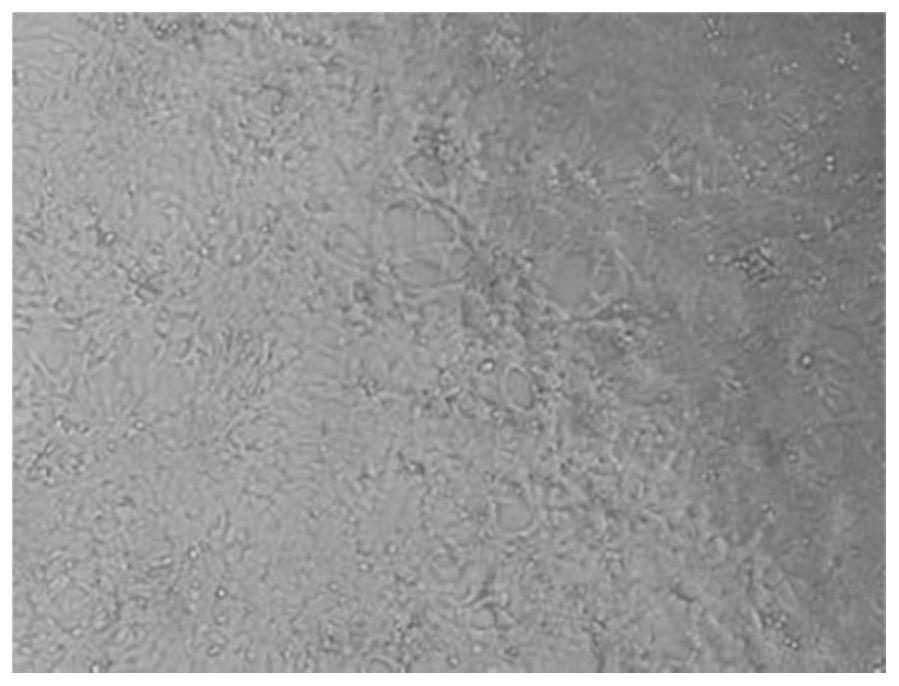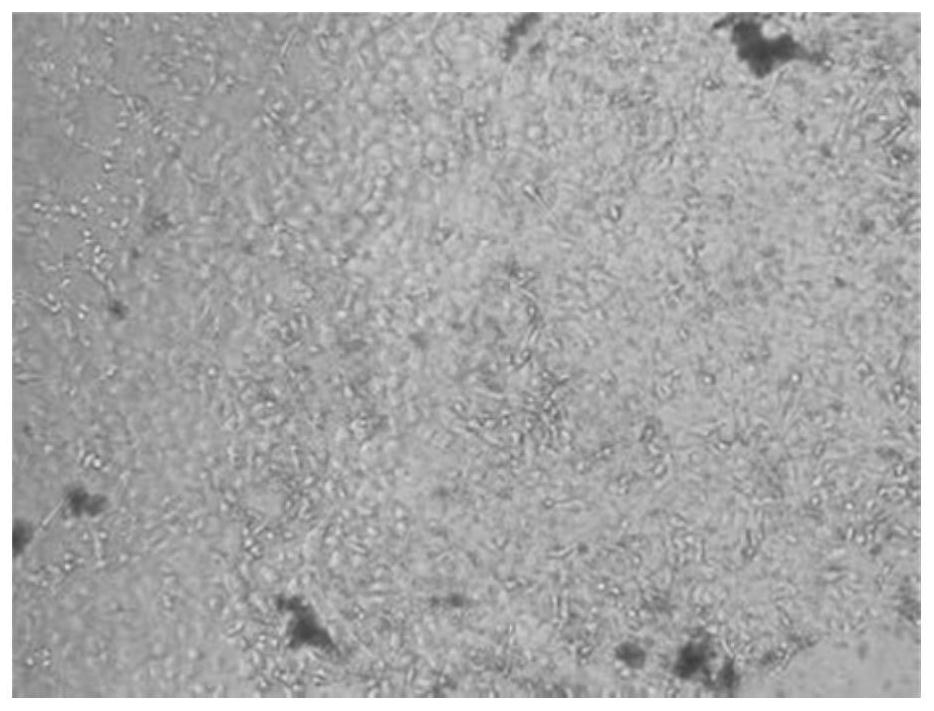Human liver microsome and cell co-culture system and construction method and application thereof
A technology of co-culture system and human liver microsomes, applied in the field of co-culture system of human liver microsomes and cells and its construction
- Summary
- Abstract
- Description
- Claims
- Application Information
AI Technical Summary
Problems solved by technology
Method used
Image
Examples
Embodiment 1
[0029] Example 1 Construction method of human liver microsome and Beas-2b cell co-culture system
[0030] This embodiment provides a method for constructing a co-culture system of human liver microsomes and cells, comprising the following steps:
[0031] (1) Prepare 250 μg / mL minocycline hydrochloride aqueous solution. Commercially available minocycline hydrochloride was dissolved in sterile water to prepare a 250 μg / mL minocycline hydrochloride aqueous solution, which was placed in a sterile centrifuge tube.
[0032] Prepare 10kU / mL penicillin aqueous solution. Dissolve commercially available penicillin in sterile water, prepare 10kU / mL penicillin aqueous solution, and put it in a sterile centrifuge tube.
[0033] Prepare 10mg / mL streptomycin aqueous solution. Dissolve commercially available streptomycin in sterile water, prepare 10 mg / mL penicillin aqueous solution, and put it in a sterile centrifuge tube.
[0034] Prepare NADPH regeneration system A+B mixture. Mix liqu...
Embodiment 2
[0040] Example 2 Application of Exogenous Substances in Vitro Metabolism
[0041] This example provides the application of the construction method of the human liver microsome and cell co-culture system in the in vitro metabolism of the tested exogenous substance, including the following steps:
[0042] Step 1) see embodiment 1;
[0043]2) Add the test exogenous substance to the incubation metabolism medium solution containing human liver microsomes, the incubation metabolism medium solution consists of the test exogenous substance and basal medium, minocycline hydrochloride, penicillin, Composed of streptomycin, NADPH regeneration system A+B mixture, and human liver microsomes, wherein the exogenous substance to be tested is nicotine, the final concentration of nicotine is 8 μg / mL, and the final concentration of minocycline hydrochloride The final concentration of penicillin is 100U / mL, the final concentration of streptomycin is 100μg / mL, the volume percent concentration of ...
Embodiment 3
[0047] Example 3 Human liver microsome and cell co-culture system
[0048] This embodiment provides a co-culture system of human liver microsomes and cells, which consists of basal medium, minocycline hydrochloride, penicillin, streptomycin, NADPH regeneration system A+B mixture, human liver microsomes and Beas -2b cell composition, wherein the final concentration of minocycline hydrochloride is 2.5 μg / mL, the final concentration of penicillin is 100 U / mL, the final concentration of streptomycin is 100 μg / mL, and NADPH regeneration system A+B is mixed The volume percent concentration of the solution was 6%, and the final concentration of human liver microsomes was 1 mg / mL.
[0049] In other embodiments, the co-culture system also includes a test exogenous substance; the test foreign substance is nicotine, and the final concentration of nicotine is 8 μg / mL; in another embodiment, the test foreign substance is tobacco The total particulate matter in product smoke, the final con...
PUM
| Property | Measurement | Unit |
|---|---|---|
| diameter | aaaaa | aaaaa |
Abstract
Description
Claims
Application Information
 Login to View More
Login to View More - R&D
- Intellectual Property
- Life Sciences
- Materials
- Tech Scout
- Unparalleled Data Quality
- Higher Quality Content
- 60% Fewer Hallucinations
Browse by: Latest US Patents, China's latest patents, Technical Efficacy Thesaurus, Application Domain, Technology Topic, Popular Technical Reports.
© 2025 PatSnap. All rights reserved.Legal|Privacy policy|Modern Slavery Act Transparency Statement|Sitemap|About US| Contact US: help@patsnap.com



